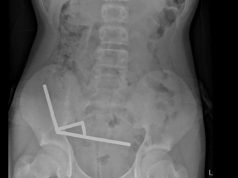However, selecting patients more likely to have favorable outcomes would greatly cut surgery volumes
THURSDAY, Dec. 19, 2019 (HealthDay News) — Variations across hospitals and surgeons in patient-reported outcomes following elective lumbar fusion surgery are mainly driven by differences in patient populations undergoing surgery, according to a study published online Dec. 4 in Spine.
Sara Khor, from the University of Washington in Seattle, and colleagues used statewide data from the Spine Care and Outcomes Assessment Program to estimate variation in patient-reported functional outcomes one year after elective lumbar fusion surgery across 58 surgeons in 17 hospitals from 2012 to 2017.
The researchers found that 58.7 percent of 737 patients achieved functional improvement and 42.5 percent reached minimal disability status at one year. There was little variation noted between hospitals and surgeons (maximum interclass correlation, 3.5 percent) after adjusting for patient factors. This variation further decreased after additional reliability adjustment. Current surgical volume could be cut by 63 percent by avoiding operation on patients with a <50 percent chance of functional improvement.
“Careful patient selection using validated prediction tools may decrease differences in outcomes across hospitals and providers and improve overall quality, but would significantly reduce surgical volumes,” the authors write.
Copyright © 2019 HealthDay. All rights reserved.








